
Like, Comment, Subscribe: Inside YouTube's Chaotic Rise to World Domination
by
Mark Bergen
Published 5 Sep 2022
GO TO NOTE REFERENCE IN TEXT Wired wrote: Megan Molteni and Adam Rogers, “The Actual Science of James Damore’s Google Memo,” Wired, August 15, 2017, https://www.wired.com/story/the-pernicious-science-of-james-damores-google-memo/. GO TO NOTE REFERENCE IN TEXT the company shared publicly: Susan Wojcicki, “Read YouTube CEO Susan Wojcicki’s Response to the Controversial Google Anti-Diversity Memo,” Fortune, August 9, 2017, https://fortune.com/2017/08/09/google-diversity-memo-wojcicki/. GO TO NOTE REFERENCE IN TEXT In a subsequent interview: Eric Johnson, “YouTube’s Susan Wojcicki Explains Why the ‘Google Memo’ Author Had to Be Fired,” Recode, October 16, 2017, https://www.vox.com/2017/10/16/16479486/youtube-susan-wojcicki-james-damore-google-memo-diversity-gender-kara-swisher-podcast. GO TO NOTE REFERENCE IN TEXT Chapter 27: Elsagate told a fellow YouTuber: Stanley “Dirt Monkey” Genadek, “Interview with Geek to Freak Greg Chism,” YouTube video, May 23, 2015, 37:06, https://www.youtube.com/watch?
…
GO TO NOTE REFERENCE IN TEXT another magazine named her: Elizabeth Murphy, “Inside 23andMe founder Anne Wojcicki’s $99 DNA Revolution,” Fast Company, October 14, 2013, https://www.fastcompany.com/3018598/for-99-this-ceo-can-tell-you-what-might-kill-you-inside-23andme-founder-anne-wojcickis-dna-r. GO TO NOTE REFERENCE IN TEXT a San Jose newspaper: Mike Swift, “Susan Wojcicki: The Most Important Googler You’ve Never Heard Of,” The Mercury News, February 3, 2011, https://www.mercurynews.com/2011/02/03/susan-wojcicki-the-most-important-googler-youve-never-heard-of/. GO TO NOTE REFERENCE IN TEXT dubbed her: Patricia Sellers, “The New Valley Girls,” Fortune, October 13, 2008, https://fortune.com/2008/10/13/the-new-valley-girls-2/.
…
GO TO NOTE REFERENCE IN TEXT conference speaker recounted: Alan Burdick, “Looking for Life on a Flat Earth,” The New Yorker, May 30, 2018, https://www.newyorker.com/science/elements/looking-for-life-on-a-flat-earth. GO TO NOTE REFERENCE IN TEXT described the scene thusly: Harry McCracken, “Susan Wojcicki Has Transformed YouTube—But She Isn’t Done Yet,” Fast Company, June 18, 2017, https://www.fastcompany.com/40427026/susan-wojcickis-youtube-isnt-tv-but-its-tvs-biggest-rival. GO TO NOTE REFERENCE IN TEXT her service’s blemishes: Although Wojcicki told the magazine she had no plans to change the ad commission terms with creators. GO TO NOTE REFERENCE IN TEXT ten-page memorandum: Kate Conger, “Exclusive: Here’s the Full 10-Page Anti-Diversity Screed Circulating Internally at Google,” Gizmodo, August 5, 2017, https://gizmodo.com/exclusive-heres-the-full-10-page-anti-diversity-screed-1797564320.
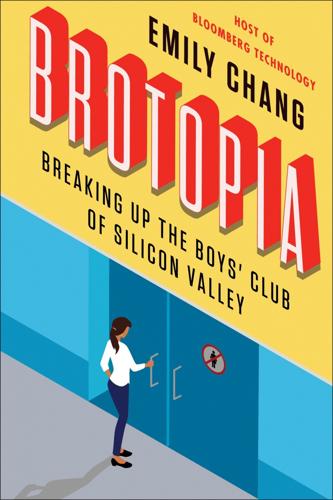
Brotopia: Breaking Up the Boys' Club of Silicon Valley
by
Emily Chang
Published 6 Feb 2018
“whole, you know, age of computer”: Jeremy Diamond, “Trump, the Computer and Email Skeptic-in-Chief,” CNN, Dec. 30, 2016, http://www.cnn.com/2016/12/29/politics/donald-trump-computers-internet-email/index.html. CHAPTER 3: GOOGLE: WHEN GOOD INTENTIONS AREN’T ENOUGH “I wish I could say”: Susan Wojcicki, “Studio 1.0: Susan Wojcicki Opens Up About Being a Working Mother in the Tech Industry,” interview by author, Bloomberg, Nov. 14, 2016, https://www.bloomberg.com/news/articles/2016-11-14/studio-1-0-susan-wojcicki-opens-up-about-being-a-working-mother-in-the-tech-industry. And it’s worth examining: Erik Larson, “Google Sued for Allegedly Paying Women Less Than Male Peers,” Bloomberg, Sept. 14, 2017, https://www.bloomberg.com/news/articles/2017-09-14/google-sued-by-women-workers-claiming-gender-discrimination.
…
“We know when we work with dudes”: Cate Huston, “We Know Who He Is,” Medium, Aug. 6, 2017, https://medium.com/@catehstn/we-know-who-he-is-596fdd93d7c2. “I’ve had my abilities”: Susan Wojcicki, “Read YouTube CEO Susan Wojcicki’s Response to the Controversial Google Anti-diversity Memo,” Fortune, Aug. 9, 2017, http://fortune.com/2017/08/09/google-diversity-memo-wojcicki. Forbes recently ranked her: “The World’s Most Powerful Women In 2016,” Forbes, Jun. 6, 2016, https://www.forbes.com/sites/alixmcnamara/2016/06/06/the-worlds-most-powerful-women-in-2016/#54f8fb971c83. “the cold weather”: Susan Wojcicki (@SusanWojcicki), “Super cold weather @Davos2016 is it’s easy to store breast milk.
…
And it’s worth examining: Erik Larson, “Google Sued for Allegedly Paying Women Less Than Male Peers,” Bloomberg, Sept. 14, 2017, https://www.bloomberg.com/news/articles/2017-09-14/google-sued-by-women-workers-claiming-gender-discrimination. Google had no marketing budget: Adam Levy, “Susan Wojcicki: From Google Doodles to YouTube CEO,” Motley Fool, July 5, 2015, https://www.fool.com/investing/general/2015/07/05/susan-wojcicki-from-google-doodles-to-youtube-ceo.aspx. “You do the content”: Steven Levy, In the Plex (New York: Simon & Schuster, 2011), 84. In this particular column: Rachel Hutton, “Meeting Our Campus Celebrities,” Stanford Daily, Nov. 9, 1998, https://stanforddailyarchive.com/cgi-bin/stanford?

Googled: The End of the World as We Know It
by
Ken Auletta
Published 1 Jan 2009
Schachter, February 15, 2008. 88 the effort at Sandberg was now working on: author interview with Sheryl Sandberg, October 11, 2007. 88 What Google was quietly exploring ... monitorthe results online: author interviews with Salar Kamangar, March 27, 2008; Marissa Mayer, March 25, 2008; Susan Wojcicki, April 16, 2008; Hal Varian, March 27, 2008; and Sheryl Sandberg, September 18, 2008. 90 Israeli entrepreneur Yossi Vardi : author interview with Sergey Brin, September 18, 2008; Brin interview, Haaretz.com, June 2, 2008. 90 “AdWords is brilliant”: author interview with Nathan Myhrvold, March 28, 2008. 91 The effort was led and architected by Susan Wojcicki: author interview with Susan Wojcicki, April 16, 2008. 91 “basically turned the Web into a giant Google billboard”: Danny Sullivan, quoted by Jefferson Graham, “The House That Helped Build Google,” USA Today, July 5, 2007. 9I “He and an engineer” ...
…
Schachter, February 15, 2008. 88 the effort at Sandberg was now working on: author interview with Sheryl Sandberg, October 11, 2007. 88 What Google was quietly exploring ... monitorthe results online: author interviews with Salar Kamangar, March 27, 2008; Marissa Mayer, March 25, 2008; Susan Wojcicki, April 16, 2008; Hal Varian, March 27, 2008; and Sheryl Sandberg, September 18, 2008. 90 Israeli entrepreneur Yossi Vardi : author interview with Sergey Brin, September 18, 2008; Brin interview, Haaretz.com, June 2, 2008. 90 “AdWords is brilliant”: author interview with Nathan Myhrvold, March 28, 2008. 91 The effort was led and architected by Susan Wojcicki: author interview with Susan Wojcicki, April 16, 2008. 91 “basically turned the Web into a giant Google billboard”: Danny Sullivan, quoted by Jefferson Graham, “The House That Helped Build Google,” USA Today, July 5, 2007. 9I “He and an engineer” ... “You see why I work with these people”: author interview with Eric Schmidt, September 12, 2007. 91 a marketing budget of two hundred thousand dollars: author interview with Susan Wojcicki, April 16, 2008. 92 “probably was an accident”: Larry Page lecture at Stanford University May 1, 2002. 92 “It changed the way content providers think”: author interview with Susan Wojcicki, April 16, 2008. 92 $7 million: Google’s Form S-1 filed with the SEC, August 18, 2004. 92 “Now we could fund”: author interview with Urs Hölzle, September 10, 2007. CHAPTER 5 Innocence or Arrogance?
…
In September, Shriram was asked to join Page and Brin as one of three Google directors, a seat he continues to hold on a board that now consists of ten members. For $1,700 a month, the just-formed company sublet new office space: the two-car Menlo Park garage and two downstairs spare rooms of an 1,800-square-foot house in Menlo Park. The owners were friends: Susan Wojcicki, an engineer at Intel, and her husband Dennis Troper, a product manager at a tech company. The newly constituted Google had found its way to them because Sergey had dated Susan’s roommate at Stanford Business School. The house was not located in the upscale sections of Menlo Park, near the Sand Hill Road offices made famous by the venture capitalists whose offices are there, or in nearby Atherton, where many of these venture capitalists live and in 2008 an acre of land could sell for $3 million.
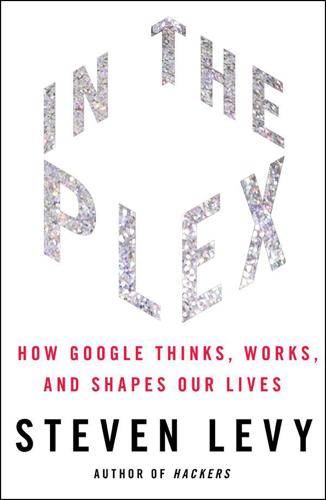
In the Plex: How Google Thinks, Works, and Shapes Our Lives
by
Steven Levy
Published 12 Apr 2011
After the Bechtolsheim meeting, Shriram invited them to his house to meet his boss Jeff Bezos, who was enthralled with their passion and “healthy stubbornness,” as they explained why they would never put display ads on their home page. Bezos joined Bechtolsheim, Cheriton, and Shriram as investors, making for a total of a million dollars of angel money. On September 4, 1998, Page and Brin filed for incorporation and finally moved off campus. Sergey’s girlfriend at the time was friendly with a manager at Intel named Susan Wojcicki, who had just purchased a house on Santa Margarita Street in Menlo Park with her husband for $615,000. To help meet the mortgage, the couple charged Google $1,700 a month to rent the garage and several rooms in the house. At that point they’d taken on their first employee, fellow Stanford student Craig Silverstein.
…
On the first day of the deal, early arrivals at headquarters discovered that there weren’t enough servers to run searches on both Google and the Netscape home page. So Google turned off its own home page—stranding its loyal home page users—until it could get more servers. “It showed we were a real business, doing the right thing and following through on our commitments,” says one early Google employee, Susan Wojcicki. (After sharing her home with Google, she had joined the company.) Google’s first stab at selling advertising began in July 1999. When Jeff Dean arrived from DEC—a couple of months before he toiled in the war room to fix the indexing problem—Brin and Page told him that they needed an ad system.
…
“It didn’t make much money,” admits Dean. Google was not yet drawing enough traffic to amass significant numbers of buyers, and Amazon’s affiliate fees—5 percent of the sale—weren’t all that high to begin with. “I think we made enough to buy the beer for TGIF [Google’s Friday-afternoon employee meeting] for a couple of weeks.” Susan Wojcicki later admitted the real problem: “No one clicked on the ads.” But she felt that the experiment was a great success. “It was incredible that we were going to build an ad system at all. What, we didn’t have enough to do with search? Now we’re asking our engineers, ‘Can you develop subsecond delivery times in every language in the world for every specific keyword?’
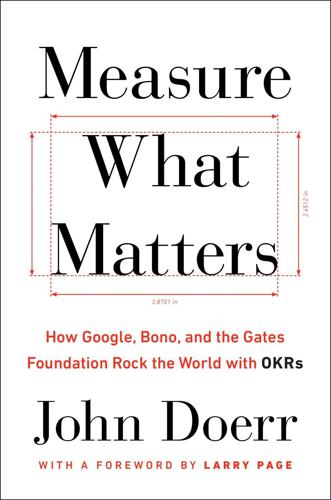
Measure What Matters: How Google, Bono, and the Gates Foundation Rock the World With OKRs
by
John Doerr
Published 23 Apr 2018
And what if we could invent a laptop around that operating system—a Chromebook—to tap directly into all of those applications living in the cloud? But those would be stretch goals for another day. 14 Stretch: The YouTube Story Susan Wojcicki CEO Cristos Goodrow Vice President of Engineering Google is so teeming with stretch goals that it would feel incomplete to chronicle only one of them. And so here is a second, the story of YouTube and how it grew—exponentially—with the “stretch” OKR superpower. Susan Wojcicki, according to Time magazine, is “ the most powerful woman on the internet.” She’s played a central role at Google from the start, even before becoming employee No. 16 and the company’s first marketing manager.
…
Version_2 For Ann, Mary, and Esther and the wonder of their unconditional love CONTENTS PRAISE FOR MEASURE WHAT MATTERS TITLE PAGE COPYRIGHT DEDICATION FOREWORD Larry Page, Alphabet CEO and Google Cofounder PART ONE: OKRs in Action 1 Google, Meet OKRs How OKRs came to Google, and the superpowers they convey. 2 The Father of OKRs Andy Grove creates and inculcates a new way of structured goal setting. 3 Operation Crush: An Intel Story How OKRs won the microprocessor wars. 4 Superpower #1: Focus and Commit to Priorities OKRs help us choose what matters most. 5 Focus: The Remind Story Brett Kopf used OKRs to overcome attention deficit disorder. 6 Commit: The Nuna Story Jini Kim’s personal commitment to transform health care. 7 Superpower #2: Align and Connect for Teamwork Public, transparent OKRs spark and strengthen collaboration. 8 Align: The MyFitnessPal Story Alignment via OKRs is more challenging—and rewarding—than Mike Lee anticipated. 9 Connect: The Intuit Story Atticus Tysen uses OKR transparency to fortify a software pioneer’s open culture. 10 Superpower #3: Track for Accountability OKRs help us monitor progress and course-correct. 11 Track: The Gates Foundation Story A $20 billion start-up wields OKRs to fight devastating diseases. 12 Superpower #4: Stretch for Amazing OKRs empower us to achieve the seemingly impossible. 13 Stretch: The Google Chrome Story CEO Sundar Pichai uses OKRs to build the world’s leading web browser. 14 Stretch: The YouTube Story CEO Susan Wojcicki and an audacious billion-hour goal. PART TWO: The New World of Work 15 Continuous Performance Management: OKRs and CFRs How conversations, feedback, and recognition help to achieve excellence. 16 Ditching Annual Performance Reviews: The Adobe Story Adobe affirms core values with conversations and feedback. 17 Baking Better Every Day: The Zume Pizza Story A robotics pioneer leverages OKRs for teamwork and leadership—and to create the perfect pizza. 18 Culture OKRs catalyze culture; CFRs nourish it. 19 Culture Change: The Lumeris Story Overcoming OKR resistance with a culture makeover. 20 Culture Change: Bono’s ONE Campaign Story The world’s greatest rock star deploys OKRs to save lives in Africa. 21 The Goals to Come DEDICATION RESOURCE 1: Google’s OKR Playbook RESOURCE 2: A Typical OKR Cycle RESOURCE 3: All Talk: Performance Conversations RESOURCE 4: In Sum RESOURCE 5: For Further Reading ACKNOWLEDGMENTS NOTES INDEX FOREWORD Larry Page Alphabet CEO and Google Cofounder I wish I had had this book nineteen years ago, when we founded Google.
…
It is a collaborative goal-setting protocol for companies, teams, and individuals. Now, OKRs are not a silver bullet. They cannot substitute for sound judgment, strong leadership, or a creative workplace culture. But if those fundamentals are in place, OKRs can guide you to the mountaintop. Larry and Sergey—with Marissa Mayer, Susan Wojcicki, Salar Kamangar, and thirty or so others, pretty much the whole company at the time—gathered to hear me out. They stood around the ping-pong table (which doubled as their boardroom table), or sprawled in beanbag chairs, dormitory style. My first PowerPoint slide defined OKRs: “A management methodology that helps to ensure that the company focuses efforts on the same important issues throughout the organization.”

I Hate the Internet: A Novel
by
Jarett Kobek
Published 3 Nov 2016
And let’s not get into his complicated romantic life, the servicing of which required a fuckpad on Manhattan island. Susan Wojcicki was the sister of Anne Wojcicki, the wife of Sergey Brin, and she was the Senior Vice President of Advertising. She was like Demeter, the goddess of the harvest and the growing earth. It was Susan Wojcicki who let Sergey Brin and Larry Page start Google in her garage, and it was Susan Wojcicki who really ran the show, overseeing the advertising which was the source of all the money. Susan Wojcicki had wanted to be an artist and Susan Wojcicki was even more mysterious than Eric Schmidt. No one knew much about her, which reminded Christine of the Eleusinian Mysteries, shrouded in darkness.

I'm Feeling Lucky: The Confessions of Google Employee Number 59
by
Douglas Edwards
Published 11 Jul 2011
They chose the variant spelling for two reasons: the googol.com web domain was taken, and Larry thought they wouldn't be able to trademark a number. Larry was a very shrewd businessman—but we'll get to that. Within a year, Larry and Sergey had taken leave from Stanford and set up in the Menlo Park garage of Susan Wojcicki, the college roommate of Sergey's girlfriend. Google's traffic began climbing and the company began hiring. They incorporated in September 1998, and when they outgrew Susan's garage in early 1999, they moved to an office at 165 University Avenue in Palo Alto. Six months later, having talked two venture capital firms out of $25 million, they moved into an industrial park at 2400 Bayshore Parkway in Mountain View.
…
Nothing here suggested rivers of currency dammed and waiting to burst forth in a torrential IPO. It was just a conference room in a generic office building on a lazy late-autumn afternoon. As I sat idly patting a three-foot ball, a number of folks on the business side of the company straggled in and introduced themselves. Susan Wojcicki, who owned the garage that had been Google's first headquarters, had left Intel to join her tenants' company as a marketing manager. Cindy McCaffrey had come over from Apple to be director of public relations. Together they walked me through a general introduction to Google with the sort of positive energy that bubbled over everywhere in those days.
…
Industrious, objective, unflappable, and willing to stretch her day across multiple time zones, Karen took all the words I threw together and arranged them in pretty columns on our website. She had more influence on the overall look of Google than anyone who worked on it after Larry and Sergey's original "non-design" design. Other than Susan Wojcicki, who had put her MBA to work at Intel, our group was new to marketing. Google hired Stanford grads in bulk and set them loose in the halls. If they didn't secure a role elsewhere, they rolled downhill to our department, where the assumption seemed to be that no special skills were required. "The founders were okay with a loose shag bag of marketing folks who were at the ready to execute on their whims," Cindy told me, "but a real marketing department with a VP, proper organization, funding, and a strategy was not a priority."
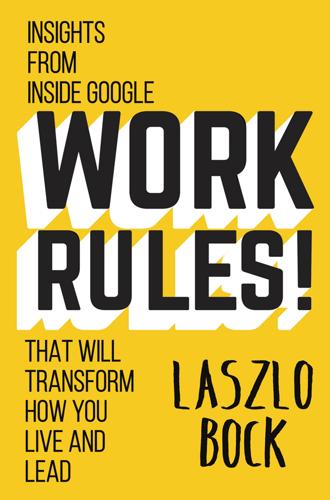
Work Rules!: Insights From Inside Google That Will Transform How You Live and Lead
by
Laszlo Bock
Published 31 Mar 2015
It wasn’t his job to care about building design and foot traffic patterns, but in doing so he became the spiritual founder of one of the most innovative organizations in history.iv Turning back to Google, Larry and Sergey deliberately left space for others to act as founders. People with vision were given the opportunity to create their own Google. For years, the troika of Susan Wojcicki, Salar Kamangar, and Marissa Mayer were referred to as the “mini-founders,” critical early Googlers who would go on to build and lead our advertising, YouTube, and search efforts, in partnership with brilliant computer scientists such as Sridhar Ramaswamy, Eric Veach, Amit Singhal, and Udi Manber.
…
The founders realized it was important to hire by committee, often interviewing candidates together while sitting around the ping-pong table, which doubled as our only conference table. They intuited that no individual interviewer will get it right every time, an instinct that would later be formalized in our “wisdom of the crowds” study in 2007, which we’ll discuss shortly. Even Susan Wojcicki, who knew Larry and Sergey well and owned the garage they were renting as Google’s first office, had to interview for her original job as our first marketing leader. Importantly, they also had the instinct to hew to an objective standard, ideally enforced by having a single, final, central reviewer who is charged with upholding that standard.
…
And as we’d hoped, the combination of our stringent hiring bar and exhaustive focus on recruiting meant we were successfully hiring remarkable people. Among the first hundred hires were people who would go on to be CEOs (of Yahoo and AOL), venture capitalists, philanthropists, and, of course, continue on as Googlers and lead some of Google’s most important initiatives. Susan Wojcicki, for example, led our advertising product efforts before moving over to lead YouTube. In fact, sixteen years later, about one-third of the original hundred hires are still at Google.xix It’s rare among start-ups for early hires to persist this long, and even rarer for them to be able to continue growing personally and professionally as the company scales from tens of people to tens of thousands.
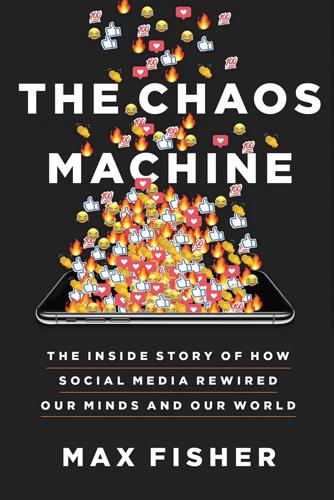
The Chaos Machine: The Inside Story of How Social Media Rewired Our Minds and Our World
by
Max Fisher
Published 5 Sep 2022
“I didn’t know what I would be working on, because they just hire people, and then they put them on a project,” said Chaslot, who speaks in a breathy, energetic mumble. He would be working, he found out, on a video platform that Google had acquired at the urging of an advertising executive named Susan Wojcicki. In 1998, Larry Page and Sergey Brin, the creators and co-founders of Google, had set up the company’s first servers in her garage. When their search engine caught on, Wojcicki (pronounced woe-jiski) left her job at Intel to work for them. She oversaw advertising products and a streaming service, Google Videos, which was getting outperformed three to one by a bare-bones startup called YouTube.
…
In the coming months, digital watchdogs, journalists, congressional committees, and the outgoing president would all accuse social media platforms of accelerating misinformation and partisan rage that paved the way for Trump’s victory. The companies, after a period of contrition for narrower sins like hosting Russian propagandists and fake news, largely deflected. But in the hours after the election, the first to suspect Silicon Valley’s culpability were many of its own rank and file. At YouTube, when CEO Susan Wojcicki convened her shell-shocked staff, much of their discussion centered on concerns that YouTube’s most-watched election-related videos were from far-right misinformation shops like Breitbart and conspiracy theorist Alex Jones. Similar misgivings were expressed by Facebook employees. “The results of the 2016 Election show that Facebook has failed in its mission,” one Facebooker posted on the company’s internal message board.
…
It was implicit admission of exactly the sort that the companies had avoided for so long: that their products could be dangerous, that societies would be safer with aspects of those products switched off, and that it was easily within their power to do so. Then came the QAnon crackdowns. Partial bans earlier in the year, removing select accounts or groups, had proven ineffective. Finally, Facebook and Instagram imposed total bans on the movement in October, with Twitter gradually culling Q-linked accounts. YouTube’s CEO, Susan Wojcicki, said only that YouTube would remove videos that accused people of involvement in Q-related conspiracies in order to harass or threaten them. The narrow rule tweak was YouTube’s only significant policy change leading up to the election. But as with Boogaloo and so many other dark currents, it was too late.

Chokepoint Capitalism
by
Rebecca Giblin
and
Cory Doctorow
Published 26 Sep 2022
It’s not known how much they spent on the suit, but Google reported spending $100 million in just the first three years.17 While all this was going on, YouTube had continued to grow rapidly, with Google’s deep pockets saving it from having to worry too much about the sustainability of its business model. As cofounder Chad Hurley explains, this helped its meteoric rise: “We could have spent more time on how we’re going to monetize the system, but we continued to focus on more growth, more users, better experience.”18 As recently as 2016 the company was still running at a deficit, with CEO Susan Wojcicki saying it was “still in investment mode” and had “no timetable” for becoming profitable.19 Google’s ownership helped YouTube in other ways too. By 2009 some estimates suggested YouTube was spending $350 million a year serving videos to users. But Levy reports Google “privately tell[ing] journalists that those guesses were based on what others had to pay to move such massive numbers of bits.
…
That will force smaller players from the market and block new ones from entering, leaving creators with even fewer, even more powerful, buyers for their work. Rather than braking YouTube’s anticompetitive flywheel, this intervention promises to speed it up. Google knows this, which is why it backflipped from its original opposition to the EU proposal. In an opinion published in the Financial Times, YouTube CEO Susan Wojcicki sang the praises of Content ID as “the best solution” for managing global rights and called for the EU to develop similar technology-based solutions.49 The cultural industries should have figured out by now that, if it’s good for Google, it’s probably not good for them. Google’s play is obvious: to be the only one that can afford to participate in the market for user-uploaded video content.
…
Erick Schonfeld, “Google Spent $100 Million Defending Against Viacom’s $1 Billion Lawsuit,” TechCrunch, July 16, 2020, https://techcrunch.com/2010/07/15/google-viacom-100-million-lawsuit. 18. Levy, In the Plex, 255. 19. Leena Rao, “YouTube CEO Says There’s ‘No Timetable’ For Profitability,” Fortune, Oct. 19, 2016, https://fortune.com/2016/10/18/youtube-profits-ceo-susan-wojcicki. 20. Levy, In the Plex, 265. 21. Victoriano Darias, “Content ID as a Solution to Address the Value Gap,” Journal of the Music and Entertainment Industry Educators Association 18, no. 1 (2018): 105, 128. 22. Christophe Muller, “YouTube: ‘No Other Platform Gives as Much Money Back to Creators,’” Guardian, Apr. 28, 2016, https://www.theguardian.com/music/musicblog/2016/apr/28/youtube-no-other-platform-gives-as-much-money-back-to-creators;Paul Resnikoff, “YouTube: 99.5% of All Infringing Music Videos Resolved by Content ID,” Digital Music News, Aug. 9, 2016, https://www.digitalmusicnews.com/2016/08/08/copyright-problems-resolved-content-id. 23.

The Authoritarian Moment: How the Left Weaponized America's Institutions Against Dissent
by
Ben Shapiro
Published 26 Jul 2021
Elizabeth Dwoskin, Nitasha Tiku, and Heather Kelly, “Facebook to start policing anti-Black hate speech more aggressively than anti-White comments, documents show,” WashingtonPost.com, December 3, 2020, https://www.washingtonpost.com/technology/2020/12/03/facebook-hate-speech/. 45. Emine Saner, “YouTube’s Susan Wojcicki: ‘Where’s the line of free speech—are you removing voices that should be heard?,’” TheGuardian.com, August 10, 2019, https://www.theguardian.com/technology/2019/aug/10/youtube-susan-wojcicki-ceo-where-line-removing-voices-heard. 46. https://www.facebook.com/communitystandards/hate_speech/. 47. Tony Romm and Elizabeth Dwoskin, “Trump banned from Facebook indefinitely, CEO Mark Zuckerberg says,” WashingtonPost.com, January 7, 2021, https://www.washingtonpost.com/technology/2021/01/07/trump-twitter-ban/. 48.
…
“We know that hate speech targeted toward underrepresented groups can be the most harmful,” explained Facebook spokeswoman Sally Aldous, “which is why we have focused our technology on finding the hate speech that users and experts tell us is the most serious.”44 All hate speech is bad, except for the hate speech the experts say is nondamaging. The so-called community standards put forward by the tech companies follow the same pattern: originally designed to protect more speech, they have been gradually ratcheted tighter and tighter in order to allow broader discretion to companies to ban dissenting material. As Susan Wojcicki, the head of YouTube, explained in June 2019, “We keep tightening and tightening the policies.”45 The ratchet only works one way. These policies are often vague and contradictory. Facebook’s “hate speech” policy, for example, bans any “direct attack” against people on the “basis of race, ethnicity, national origin, disability, religious affiliation, caste, sexual orientation, sex, gender identity and serious disease.”

Alpha Girls: The Women Upstarts Who Took on Silicon Valley's Male Culture and Made the Deals of a Lifetime
by
Julian Guthrie
Published 15 Nov 2019
But what had caught the attention of Accel partners Mitch Kapor and Jim Breyer were the well-placed endorsements of Google search by its early adopters, the engineers and software developers. “This thing Google is better than anything else,” Kapor and Breyer were told. “This is all we’re using.” Google was growing fast—getting more than ten thousand searches a day. Brin and Page had moved the start-up from their Stanford dorm room to a garage rented to them by Susan Wojcicki, then to a small office above a bike shop here on University Avenue in Palo Alto. Theresia kept an eye on the time, aware that partners’ meetings often went late. Accel occupied floors two through four of the building at 428 University Avenue, about three miles from the VCs of Sand Hill Road.
…
She was a mother and she had breast cancer. THERESIA After appearing on the cover of Fortune, Theresia became a fixture in top-ten-women-in-tech lists of the most powerful women, the most influential women, the most successful women, the women to watch. She was featured in Time alongside Susan Wojcicki at Google, Meg Whitman at Hewlett-Packard, Virginia Rometty of IBM, Marissa Mayer of Yahoo!, Safra Catz at Oracle, and Sheryl Sandberg. Theresia was one of only two women on the Forbes Midas list of top one hundred venture capitalists, where she was lauded for “bringing in more than a billion dollars in capital gains through her savvy investments.”
…
That night, as music played and drinks flowed, the women took turns posing in the photo booth, donning costumes and holding signs like I LIKE BIG BUCKS, I’M WITH HER, and NAUGHTY OR NICE. Theresia’s daughter, Sarah, a freshman in high school, had expressed interest in attending the party. Theresia was half convinced that the draw for Sarah was not her mom but her mom’s friends, such as Emily White, the COO of Snapchat, and Susan Wojcicki, the CEO of YouTube. But Theresia noted a deeper change in her daughter. When Sarah was in elementary school, she had asked her mom why she wasn’t a room parent or a field trip chaperone. Theresia was the mother who would buy baked goods and put them in a homemade container to pass them off as her own.
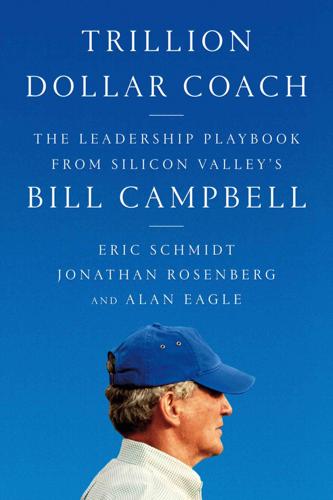
Trillion Dollar Coach: The Leadership Playbook of Silicon Valley's Bill Campbell
by
Eric Schmidt
,
Jonathan Rosenberg
and
Alan Eagle
Published 15 Apr 2019
But we learned by observing his community activities. Invest in creating real, emotional bonds between people. Those are what endure and what make teams truly strong. * * * ALWAYS BUILD COMMUNITIES BUILD COMMUNITIES INSIDE AND OUTSIDE OF WORK. A PLACE IS MUCH STRONGER WHEN PEOPLE ARE CONNECTED. * * * HELP PEOPLE Susan Wojcicki was an early employee at Google and spoke with Bill frequently over the years. A few years back, Susan, who was by then the head of YouTube, wanted to attend an important tech and media conference. Despite YouTube’s status as one of the biggest video destinations for consumers around the world and an important player in the media and entertainment world, Susan could not secure an invitation.
…
Bollinger Todd Bradley Sergey Brin Shona Brown Eve Burton Al Butts Derek Butts Bruce Chizen Jared Cohen Scott Cook Dick Costolo Eddy Cue John Doerr John Donahoe Mickey Drexler David Drummond Donna Dubinsky Joe Ducar Brad Ehikian Alan Eustace Bruno Fortozo Pat Gallagher Dean Gilbert Alan Gleicher Al Gore Diane Greene Bill Gurley John Hennessy Ben Horowitz Bradley Horowitz Mark Human Chad Hurley Jim Husson Bob Iger Eric Johnson Andrea Jung Salar Kamangar Vinod Khosla Dave Kinser Omid Kordestani Scotty Kramer Adam Lashinsky Ronnie Lott Marissa Mayer Marc Mazur Mike McCue Mary Meeker Shishir Mehrotra Emil Michael Michael Moe Larry Page Sundar Pichai Patrick Pichette Peter Pilling Ruth Porat Jeff Reynolds Jesse Rogers Dan Rosensweig Wayne Rosing Jim Rudgers Sheryl Sandberg Philip Schiller Philipp Schindler Chadé Severin Danny Shader Ram Shriram Brad Smith Esta Stecher Dr. Ron Sugar Stacy Sullivan Nirav Tolia Rachel Whetstone Susan Wojcicki Like any important project, this was a team effort, and ours has been fantastic. Lauren LeBeouf kept us organized and managed all of those interviews, but more important, proved to be an astute and sensitive editor. She made this book much better. Marina Krakovsky helped us connect Bill’s principles with academic research, showing that he was truly ahead of his time in the business management world.

System Error: Where Big Tech Went Wrong and How We Can Reboot
by
Rob Reich
,
Mehran Sahami
and
Jeremy M. Weinstein
Published 6 Sep 2021
According to the February 2021 report: Ibid. “because bullying and harassment”: “Facebook’s Response to Australian Government Consultation on a New Online Safety Act,” Facebook Newsroom, February 19, 2020, https://about.fb.com/wp-content/uploads/2020/02/Facebook-response-to-consultation-new-Online-Safety-Act.pdf. YouTube CEO Susan Wojcicki: Susan Wojcicki, “Expanding Our Work Against Abuse of Our Platform,” YouTube Official Blog, December 5, 2017, https://blog.youtube/news-and-events/expanding-our-work-against-abuse-of-our/. “the team responsible”: Zuckerberg, “A Blueprint for Content Governance and Enforcement.” “distressing videos and photographs”: Sandra E.
…
This is a point that Facebook readily concedes, stating “because bullying and harassment are highly personal by nature, in many instances, we need a person to report this behavior to us before we can identify or remove it.” Though AI will continue to improve in the future, it’s really only the first line of defense. The number of human content moderators needed to tackle the volume of information on these platforms is enormous. In 2017, YouTube CEO Susan Wojcicki announced that the company would hire 10,000 content moderators in the coming year. The following year, Mark Zuckerberg wrote that “the team responsible for enforcing these [community standards] policies is made up of around 30,000 people. . . . they review more than two million pieces of content every day.”

Valley of Genius: The Uncensored History of Silicon Valley (As Told by the Hackers, Founders, and Freaks Who Made It Boom)
by
Adam Fisher
Published 9 Jul 2018
So from the very beginning the mission for Google was not to use AI to make their search better, but to use search to make an AI. Heather Cairns: To rule the Earth!? Here we are. There are seven people inside of someone’s house, working out of bedrooms, and that’s what they were saying then. Ray Sidney: The first Google digs was half of Susan Wojcicki’s house, including a garage. Heather Cairns: We were allowed to use Susan’s washer and dryer that was in the garage. But we were working out of bedrooms; we weren’t in the garage. That’s the folklore, because every start-up is supposed to be in a garage. David Cheriton: I’m tempted to say it was like a frat house, although I’m not sure I’ve ever been to a frat house.
…
It was an idea that we had talked about for a long time, but there was this belief that somehow it wouldn’t work. But it seemed like an interesting problem, so one evening I implemented this content-targeting system, just as sort of a side project, not because I was supposed to. And it turned out to work. Susan Wojcicki: It was a really novel idea at the time to serve ads that were targeted dynamically. People were saying, “This is a sports site, so we’ll serve a sports ad.” And we were saying, “No. We can actually look at the page in real time and figure out what this page is about.” Paul Buchheit: What I wrote was just a throwaway prototype, but it got people thinking because it proved that it was possible, and that it wasn’t too hard because I was able to do it in less than a day.
…
When the boom turned to bust, Williams stayed and eventually started a series of companies, the most notable being Twitter. Terry Winograd is a professor of computer science at Stanford University. He was the thesis advisor to Larry Page, and he guided the very earliest incarnation of what we now know as Google. Susan Wojcicki rented out a few spare bedrooms in her Menlo Park home to Google when they were just starting, and she quickly got sucked into the company. She is now the CEO of the company’s YouTube subsidiary—the second most popular site in the world, after Google. Gary Wolf was one of the first—and best—writers for Wired magazine and soon was tapped to clean up the mess that was HotWired, the print magazine’s online spin-off.
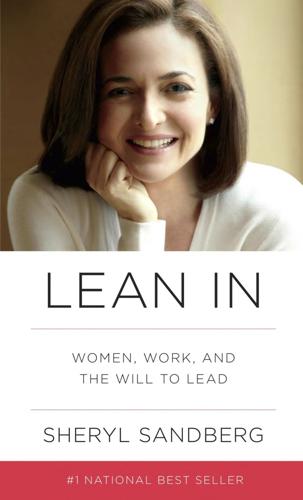
Lean In: Women, Work, and the Will to Lead
by
Sheryl Sandberg
Published 11 Mar 2013
Google was hard charging and hypercompetitive, but it also supported combining work and parenthood—an attitude that clearly started at the top. Larry and Sergey came to my baby shower and each gave me a certificate that entitled me to one hour of babysitting. (I never used the certificates, and if I could find them, I bet I could auction them off for charity, like lunch with Warren Buffett.) Susan Wojcicki, who blazed a trail by having four children while being one of Google’s earliest and most valuable employees, brought her children to the office when her babysitter was sick. Both my boss, Omid, and David Fischer, the most senior leader on my team, were steadfast supporters and did not allow others to take over parts of my job.
…
I watched as the promise my generation had for female leadership dwindled. By the time I had been at Google for a few years, I realized that the problem wasn’t going away. So even though the thought still scared me, I decided it was time to stop putting my head down and to start speaking out. Fortunately, I had company. In 2005, my colleagues Susan Wojcicki and Marissa Mayer and I all noticed that the speakers who visited the Google campus were fascinating, notable, and almost always male. In response, we founded Women@Google and kicked off the new series with luminaries Gloria Steinem and Jane Fonda, who were launching the Women’s Media Center.

Culture Warlords: My Journey Into the Dark Web of White Supremacy
by
Talia Lavin
Published 14 Jul 2020
The author, Joseph Bernstein, also focused on Soph’s extraordinary propensity to respond to any limitations on her content with threats of violence. In response to concerns over pedophilic commentary on Soph’s content, YouTube had removed the comments sections on her videos. In response, Soph uploaded a twelve-minute rant directly threatening the life of Susan Wojcicki, YouTube’s CEO. “Susan, I’ve known your address since last summer,” she said, staring directly into the camera. “I’ve got a Luger and a mitochondrial disease. I don’t care if I live. Why should I care if you live, or your children? I just called an Uber. You’ve got about seven minutes to draft up a will. . . .
…
But an increasingly strained and undermanned press corps in the United States hardly suffices to patrol the nigh-endless digital deeps of the contemporary internet landscape. In a speech to the Anti-Defamation League in November 2019, comedian Sacha Baron Cohen pointed out the inherent risks of the so-called “Silicon Six”—“Zuckerberg at Facebook; Sundar Pichai at Google; at Google’s parent company Alphabet, Larry Page and Sergey Brin; Brin’s ex-sister-in-law, Susan Wojcicki at YouTube; and Jack Dorsey at Twitter”—being totally responsible for, and unconstrained in, making such momentous decisions as whether Holocaust denial and antiblack hate speech have a role in public discourse. Silicon Valley has long operated on a libertarian, reckless, “move fast and break things” ethos that is far more conservative about reining in hate speech than allowing it to reverberate in the public consciousness unchecked.
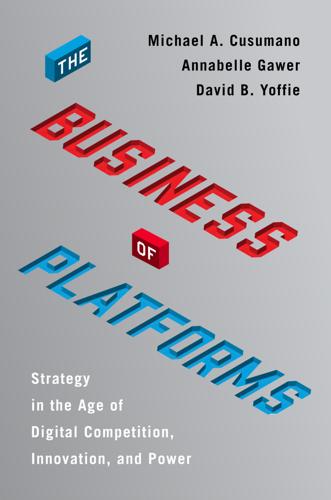
The Business of Platforms: Strategy in the Age of Digital Competition, Innovation, and Power
by
Michael A. Cusumano
,
Annabelle Gawer
and
David B. Yoffie
Published 6 May 2019
Survivors and the relatives of victims of numerous shootings were reportedly subjected to online abuse and threats, often tied to popular conspiracy theory ideas featured prominently on YouTube. Parents of people killed in high-profile shootings tried to report abusive videos about their deceased children and repeatedly called on Google to hire more moderators and to better enforce its policies.57 In response to this increasing negative press and public sentiment, YouTube CEO Susan Wojcicki announced in December 2017 that Google was going to hire thousands of new “moderators,” expanding its total workforce to more than 10,000 people responsible for reviewing content that could violate its policies.58 In addition, YouTube announced it would continue to develop advanced machine learning technology to automatically flag problematic content for removal.
…
Contrary to Trump Tweet, Yes,” New York Times, August 16, 2017. 54.Ibid. 55.Daniel Keyes, “How e-Tailers Can Steal Amazon’s Customers at the Last Moment,” Business Insider Intelligence, June 1, 2018 (accessed June 22, 2018). 56.Emma Woollacott, “YouTube Hires More Moderators as Content Creators Complain They’re Being Unfairly Targeted,” Forbes, December 5, 2017. 57.Sam Levin, “Google to Hire Thousands of Moderators After Outcry Over YouTube Abuse Videos,” Guardian, December 5, 2017. 58.Susan Wojcicki, “Expanding Our Work Against Abuse of Our Platform,” YouTube Official Blog, December 4, 2017, https://youtube.googleblog.com/2017/12/expanding-our-work-against-abuse-of-our.html (accessed October 30, 2018). 59.Ibid. 60.Alex Hern, “YouTube to Manually Review Popular Videos Before Placing Ads,” Guardian, January 17, 2018. 61.Amar Toor, “EU Close to Making Facebook, YouTube, and Twitter Block Hate Speech Videos,” Verge, May 24, 2017. 62.Catherine Supp, “Commission Backs Away from Regulating Online Platforms over Hate Speech,” Euractiv, January 19, 2018. 63.European Commission, “Results of Commission’s Last Round of Monitoring of the Code of Conduct Against Online Hate Speech,” January 2018, http://ec.europa.eu/newsroom/just/item-detail.cfm?

Nexus: A Brief History of Information Networks From the Stone Age to AI
by
Yuval Noah Harari
Published 9 Sep 2024
Jack Nicas, “YouTube Tops 1 Billion Hours of Video a Day, on Pace to Eclipse TV,” Wall Street Journal, Feb. 27, 2017, www.wsj.com/articles/youtube-tops-1-billion-hours-of-video-a-day-on-pace-to-eclipse-tv-1488220851. 6. Fisher, Chaos Machine; Ariely, Misbelief, 262–63. 7. Fisher, Chaos Machine, 266–77. 8. Ibid., 276–77. 9. Ibid., 270. 10. Emine Saner, “YouTube’s Susan Wojcicki: ‘Where’s the Line of Free Speech—Are You Removing Voices That Should Be Heard?,’ ” Guardian, Aug. 10, 2011, www.theguardian.com/technology/2019/aug/10/youtube-susan-wojcicki-ceo-where-line-removing-voices-heard. 11. Dan Milmo, “Frances Haugen: ‘I Never Wanted to Be a Whistleblower. But Lives Were in Danger,’ ” Guardian, Oct. 24, 2021, www.theguardian.com/technology/2021/oct/24/frances-haugen-i-never-wanted-to-be-a-whistleblower-but-lives-were-in-danger. 12.
…
The people who manage Facebook, YouTube, TikTok, and other platforms routinely try to excuse themselves by shifting the blame from their algorithms to “human nature.” They argue that it is human nature that produces all the hate and lies on the platforms. The tech giants then claim that due to their commitment to free speech values, they hesitate to censor the expression of genuine human emotions. For example, in 2019 the CEO of YouTube, Susan Wojcicki, explained, “The way that we think about it is: ‘Is this content violating one of our policies? Has it violated anything in terms of hate, harassment?’ If it has, we remove that content. We keep tightening and tightening the policies. We also get criticism, just to be clear, [about] where do you draw the lines of free speech and, if you draw it too tightly, are you removing voices of society that should be heard?
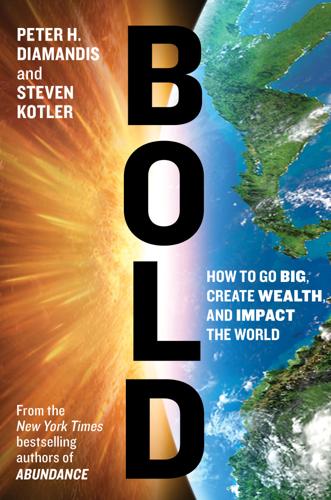
Bold: How to Go Big, Create Wealth and Impact the World
by
Peter H. Diamandis
and
Steven Kotler
Published 3 Feb 2015
But more often than not, if you can show progress along the way, smart investors will come on some pretty crazy rides.” Google’s Eight Innovation Principles While Kelly Johnson had fourteen rules, Google has eight innovation principles that govern their strategy, famously summarized in a 2011 article by Google senior vice president of advertising Susan Wojcicki.17 Throughout this book, we’ll see them highlighted in different ways and exhibited by different people. Without doubt, these rules are core to your success as an exponential entrepreneur. My suggestion is that you write them on your wall, use them as a filter for your next start-up idea, but above all, don’t ignore them.
…
Pink, Drive: The Surprising Truth About What Motivates Us (New York: Riverhead Books, 2010). 14 Christopher Mims, “When 110% won’t do: Google engineers insist 20% time is not dead—it’s just turned into 120% time” qz.com, August 16, 2013. 15 James Marshall Reilly, “The Zappos Story: How Failure can Fuel Business Success,” Monster.com, http://hiring.monster.com/hr/hr-best-practices/workforce-management/hr-management-skills/business-success.aspx. 16 All Astro Teller quotes come from a series of AIs conducted between 2013 and 2014. 17 Susan Wojcicki, “The Eight Pillars of Innovation,” thinkwithgoogle.com, July 2011, http://www.thinkwithgoogle.com/articles/8-pillars-of-innovation.html. 18 For a much deeper look at flow and its impact on performance see Steven Kotler, The Rise of Superman: Decoding the Science of Ultimate Human Performance (New York: New Harvest, 2014). 19 AI with John Hagel conducted 2014. 20 Steven Kotler and Jamie Wheal, “Five Surprising Ways Richard Branson Harnessed Flow to Build A Multi-Billion Dollar Empire,” Forbes, March 25, 2014, http://www.forbes.com/sites/stevenkotler/2014/03/25/five-surprising-ways-richard-branson-harnessed-flow-to-build-a-multi-billion-dollar-empire/. 21 Steven Kotler, “The Rise of Superman: 17 Flow Triggers,” Slideshare.net, March 2014, http://www.slideshare.net/StevenKotler/17-flow-triggers. 22 AI with Ned Hallowell conducted 2013. 23 Kevin Rathunde, “Montessori Education and Optimal Experience: A Framework for New Research,” The NAMTA Journal (Winter 2001): 11–43. 24 Mihaly Csikszentmihalyi, Flow: The Psychology of Optimal Experience (New York: Harper & Row, 1990), 48–70. 25 For a great breakdown of group flow and the social triggers see Keith Sawyer, Group Genius: The Creative Power of Collaboration (New York: Basic Books), 2008. 26 AI with Ismail, 2013.

Masters of Scale: Surprising Truths From the World's Most Successful Entrepreneurs
by
Reid Hoffman
,
June Cohen
and
Deron Triff
Published 14 Oct 2021
They are among the most iconic entrepreneurs behind the disruptive companies that have shaped our cultural landscape. Among the pantheon of modern scale leaders sharing their stories with us: Bill Gates, Mark Cuban, Starbucks’ Howard Schultz, Netflix’s Reed Hastings, Apple’s Angela Ahrendts, Google’s Eric Schmidt, Yahoo’s Marissa Mayer, Airbnb’s Brian Chesky, YouTube’s Susan Wojcicki, Spotify’s Daniel Ek, Canva’s Melanie Perkins, Xapo’s Wences Casares, Spanx’s Sara Blakely, the Black List’s Franklin Leonard, ClassPass’s Payal Kadakia, Duolingo’s Luis von Ahn, Minted’s Mariam Naficy, Shake Shack founder Danny Meyer, Walker & Company’s Tristan Walker, designer Tory Burch, investor and philanthropist Robert F.
…
And that’s a legacy of that early decision.” The $1.65 billion acquisition of YouTube is a perfect example. “We made the decision to purchase YouTube in about ten days. Incredibly historic decision but we were ready. People were focused. We wanted to get it done,” Eric recalls. And Susan Wojcicki also recalls the speed. Susan is YouTube’s current CEO, but at the time of the acquisition, she was a longtime Googler, then working on a new program called Google Video, a direct competitor to YouTube. “YouTube launched a few months after us, and they very quickly grew and were very soon bigger than us,” Susan recalls.

The New Prophets of Capital
by
Nicole Aschoff
Published 10 Mar 2015
Computer technology has been mainstreamed, and women have joined the high-tech gold rush. Tech mammoths like Facebook, IBM, Yahoo!, Hewlett-Packard, and Google all employ women in leading roles. But despite the power of women like Sheryl Sandberg, Ginni Rometty, Marissa Meyer, Meg Whitman, and Susan Wojcicki, the gender balance in Silicon Valley and the larger corporate world remains highly skewed, and most leadership positions are held by men. At tech companies only 2 to 4 percent of engineers are women; at Fortune 500 firms, 4 percent of CEOs are women. Boardrooms are a bastion of maleness, and many companies, like Twitter, have no women on their board.
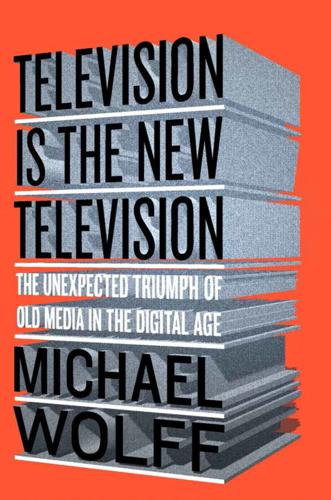
Television Is the New Television: The Unexpected Triumph of Old Media in the Digital Age
by
Michael Wolff
Published 22 Jun 2015
Maker Studios, a native producer of YouTube videos and promoter of YouTube talent, was sold to Disney for more than $500 million. YouTube, suddenly excited that YouTube might finally be catching up with the market, launched a major campaign—much of it in old media—to promote, in television fashion, its own stars. Google sent in one of its key executives, Susan Wojcicki, who had masterminded much of Google’s search advertising strategy. Wojcicki said the YouTube strategy was to be more like television. In essence, it was a bifurcated strategy. The original YouTube would be relegated to a nether YouTube, a low-end and low-margin outlet, like certain low-performing areas of the cable dial.
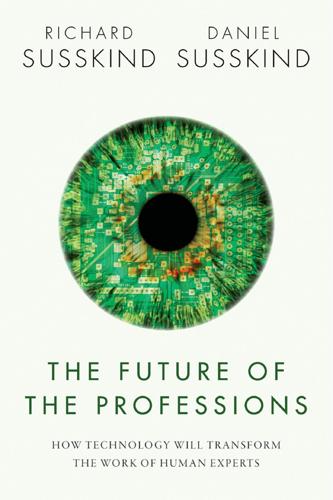
The Future of the Professions: How Technology Will Transform the Work of Human Experts
by
Richard Susskind
and
Daniel Susskind
Published 24 Aug 2015
From ‘Business model evolving, circulation revenue rising’, Newspaper Association of America, 18 April 2014 <http://www.naa.org/Trends-and-Numbers/Newspaper-Revenue/Newspaper-Media-Industry-Revenue-Profile-2013.aspx> (accessed 8 March 2015). 191 ‘Digital News Report 2014’, Reuters Institute for the Study of Journalism <http://www.digitalnewsreport.org> (accessed 7 March 2015). 192 Facebook Newsroom, <http://newsroom.fb.com/company-info/> (accessed 8 March 2015). 193 <https://twitter.com> (accessed 8 March 2015). 194 <https://www.youtube.com> (accessed 8 March 2015). 195 ‘Digital News Report 2014’, Reuters Institute for the Study of Journalism <http://www.digitalnewsreport.org> (accessed 7 March 2015). 196 Nic Newman, ‘Journalism, Media, and Technology Predictions 2013’, accessed online <https://docs.google.com/file/d/0B-whYpjV6DzWUER1VjgySzB1OG8/edit> (8 March 2015). 197 David Carr, ‘Facebook Offers Life Raft, but Publishers Are Wary’, New York Times, 26 Oct. 2014 <http://www.nytimes.com> (accessed 8 March 2015). 198 Lauren Goode, ‘Susan Wojcicki Wants to Sell You Youtube Video Subscriptions (Video)’, re/code, 27 Oct. 2014 <http://recode.net> (accessed 8 March 2015). 199 1.39bn total monthly users, 1.19bn mobile monthly users. From <http://newsroom.fb.com/company-info/> (accessed 27 March 2015). 200 Nic Newman, ‘Mainstream media and the distribution of news in the age of social discovery’, Reuters Institute for the Study of Journalism, Sept. 2011 <https://reutersinstitute.politics.ox.ac.uk> (accessed 8 March 2015). 201 John Reynolds, ‘Three-fifth’s of Twitter’s UK users follow a newspaper or journalist’, Guardian, 4 Mar. 2014 <http://www.theguardian.com/> (accessed 8 March 2015). 202 ‘ABCs: National daily newspaper circulation September 2014’, Guardian, 10 Oct. 2014 <http://www.theguardian.com/> and <https://twitter.com> (accessed 8 March 2015). 203 David Carr, ‘Facebook Offers Life Raft, but Publishers Are Wary’, New York Times, 26 Oct. 2014 <http://www.nytimes.com> (accessed 8 March 2015). 204 Lizzie Widdicombe, ‘From Mars’, New Yorker, 23 Sept. 2013. 205 Scott E.
…
Nicholas Morris and David Vines (Oxford: Oxford University Press, 2014), 129–53. Goldin, Claudia, and Lawrence Katz, The Race between Education and Technology (Cambridge, Mass.: Harvard University Press, 2009). Goldman, Harvey, ‘Good Work, from Homer to the Present’, Daedalus, 134: 3 (Summer 2005), 36–41. Goode, Lauren, ‘Susan Wojcicki Wants to Sell You Youtube Video Subscriptions (Video)’, re/code, 27 October 2014 <http://recode.net> (accessed 8 March 2015). Goode, William, ‘Encroachment, Charlatanism and the Emerging Profession: Psychology, Sociology, and Medicine’, American Sociological Review, 25: 6 (1960), 902–65. Goodstein, Laurie, ‘Some Mormons Search the Web and Find Doubt’, New York Times, 30 July 2013 <http://www.nytimes.com> (accessed 27 March 2015).
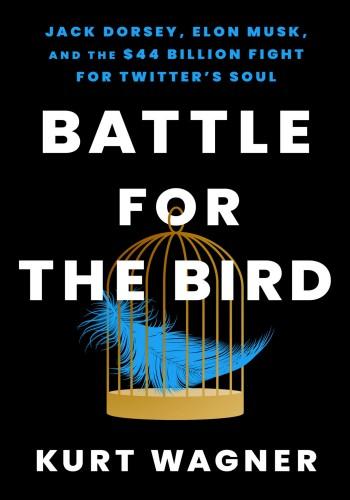
Battle for the Bird: Jack Dorsey, Elon Musk, and the $44 Billion Fight for Twitter's Soul
by
Kurt Wagner
Published 20 Feb 2024
The team at Spencer Stuart scoured Silicon Valley for anyone with a big tech or media job. The initial list of candidates reviewed by the board included almost two hundred names, many of them already holding major positions and thus highly unlikely to be interested. The list included people like Susan Wojcicki, who was running YouTube; Tim Armstrong, the CEO of AOL; Jason Kilar, who had recently been head of Hulu; and Angela Ahrendts, the head of retail for Apple. As the weeks ticked by and phone calls were made, the list began to narrow significantly. Omid Kordestani, a longtime and well-liked Google executive credited with building the company’s massive search ads business, was one potential target, though he bowed out after meeting with Dorsey; he walked away convinced that the Twitter cofounder was both interested and committed to the job despite the board’s claim that it wouldn’t hire a part-timer.
…
Twitter’s executive team, including Dorsey, Noto, COO Adam Bain, and general counsel Vijaya Gadde, met with a laundry list of prominent tech executives over several weeks. There was Jeff Blackburn from Amazon, who didn’t seem that interested, and Eddy Cue and Adrian Perica from Apple, who seemed very interested but couldn’t figure out how Twitter fit into Apple’s broader strategy. Twitter chairman Omid Kordestani spoke with YouTube boss Susan Wojcicki and other Google execs, old friends and colleagues who were also interested but worried about antitrust issues. Brian Roberts at Comcast and Steve Burke from NBCUniversal took meetings but were never serious buyers. Microsoft CEO Satya Nadella and his top dealmaker Peggy Johnson also met with Twitter but had just bought LinkedIn for $26 billion; Twitter, perhaps, was a few months late.

Don't Burn This Book: Thinking for Yourself in an Age of Unreason
by
Dave Rubin
Published 27 Apr 2020
Especially not straight white men. Not only are minorities some of the most famous and successful players in Hollywood, they are also among the most powerful people in our country’s leading industries. Take, for instance, openly gay CEO of Apple Tim Cook (net worth $500 million); female CEO of YouTube Susan Wojcicki (net worth $500 million); and CEO of General Motors Mary Barra (net worth $60 million). This is part of why Jay-Z (a black man, in case you’d forgotten) is now hip-hop’s first billionaire and why Rihanna (a black immigrant from Barbados) was recently named the world’s richest female musician with a wealth of $600 million.
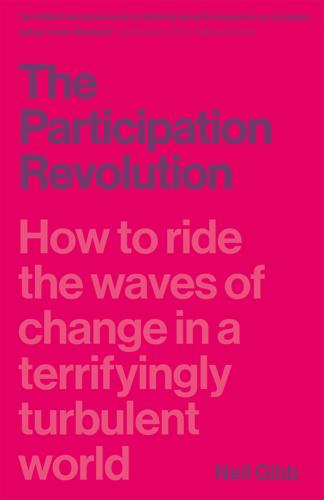
The Participation Revolution: How to Ride the Waves of Change in a Terrifyingly Turbulent World
by
Neil Gibb
Published 15 Feb 2018
And it is the increasingly disruptive and unsettling transitional phase we are in now. The great transformation “Revolutions are inaugurated by a growing sense…that an existing paradigm has ceased to function adequately” Thomas Kuhn, The Structure of Scientific Revolutions Seventeen years after Sergey Brin and Larry Page first launched Google in their friend Susan Wojcicki’s garage in Menlo Park, California, HBO released the second season of Silicon Valley, its fictional comedy parodying the thriving industry that had grown out of those early garage start-ups. In the third episode, Gareth Belson – CEO of a company that has more than a few parallels with the one that Brin and Page had created – rather grandiosely likened Silicon Valley to Europe in the Renaissance.
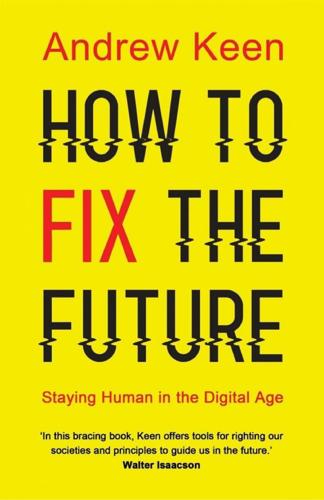
How to Fix the Future: Staying Human in the Digital Age
by
Andrew Keen
Published 1 Mar 2018
Wojcicki not only teaches the children of the tech aristocracy but is also the matriarch of one of Silicon Valley’s most remarkable tech families. She is the mother of three adult daughters: Susan, Anne, and Janet. In 1998, when Larry Page and Sergei Brin founded Google as Stanford graduate students, Susan rented them space in her garage. Today Susan Wojcicki is the CEO of YouTube and among the most powerful entertainment moguls in the world. Her sister Janet is a professor of epidemiology at UC San Francisco. Anne, the youngest Wojcicki, is the cofounder and CEO of the gene mapping start-up 23andMe and was married to Google cofounder Sergei Brin.

Bitcoin Billionaires: A True Story of Genius, Betrayal, and Redemption
by
Ben Mezrich
Published 20 May 2019
In California, they launched revolutions from garages: Jobs and Woz building personal computers next to a rack of pocket wrenches in a garage in Los Altos, Bill Hewitt and Dave Packard making oscillators behind barn-like doors in a garage in Palo Alto, and Larry Page and Sergey Brin inventing Google as Stanford grad students in Susan Wojcicki’s garage in Menlo Park. But in Brooklyn, there weren’t many garages; there were basements. And in the part of Brooklyn where Charlie grew up, those basements were crowded, dark, dingy, and usually smelled a little bit like brisket. From above, the urban neighborhood of narrow streets spanning Avenue I to Avenue V, Nostrand to West Sixth Street, might have looked like any other section of the borough, but in reality, Charlie’s home sat right in the center of the seventy-five-thousand-member-strong Syrian Orthodox Jewish community—an ethnic, religious, and cultural island unto itself.

Life After Google: The Fall of Big Data and the Rise of the Blockchain Economy
by
George Gilder
Published 16 Jul 2018
Sun founder Andy Bechtolsheim, Amazon founder Jeff Bezos, and Cisco networking guru Dave Cheriton had all blessed the Google project with substantial investments. Stanford itself earned 1.8 million shares in exchange for Google’s access to Page’s patents held by the university. (Stanford had cashed in those shares for $336 million by 2005). Google moved out of Stanford in 1999 into the Menlo Park garage of Susan Wojcicki, an Intel manager soon to be CEO of YouTube and a sister of Anne, the founder of the genomic startup 23andMe. Brin’s marriage to Anne in 2007 symbolized the procreative embrace of Silicon Valley, Sand Hill Road, and Palo Alto. (They divorced in 2015.) By 2017, Google’s own computer scientists had authored more of the world’s most-cited papers in the subject than had Stanford’s own faculty.1 Google’s founders always conceived of their projects in prophetic terms.
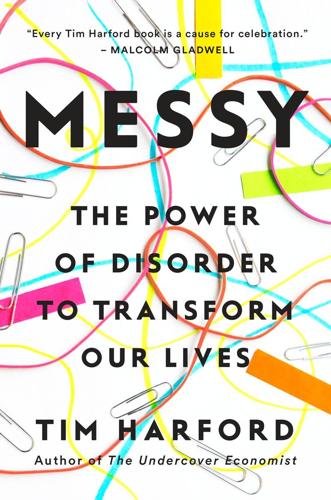
Messy: The Power of Disorder to Transform Our Lives
by
Tim Harford
Published 3 Oct 2016
One room contained Sergey, Larry, and two other engineers. The garage itself was packed with servers. Desks were the simplest possible design: a door placed horizontally across a pair of sawhorses. Nothing could be cruder or easier to put together and take apart, or easier to hack about. One day the house’s owner, Susan Wojcicki, was expecting delivery of a refrigerator. She returned home to find that the Googlers had commandeered it, moved it to their part of the house, and filled it with drinks and snacks. This was the typical “anything goes” scavenger mentality of early Google. Wojcicki didn’t seem to mind—she later joined the company and ended up running YouTube.24 In any case, by the spring of 1999, Google had moved again, to an office over a bicycle shop.

Frenemies: The Epic Disruption of the Ad Business
by
Ken Auletta
Published 4 Jun 2018
And at the end of the day, we subscribe to all the platforms and love all of the children equally. . . . If you adopt that view, it’s all the same. The siloes are broken down.” The New Front brought bombast as well as competition. At YouTube’s well-attended New Front presentation at the Javits Center, CEO Susan Wojcicki declared fallaciously that YouTube “reached” more 18- to 49-year-old mobile viewers “during prime time than the top ten shows combined.” But as noted earlier, “reach” does not equal viewing. Nielsen reports that the average audience per minute on television accounts for 95 percent of video watching, with smartphone video accounting for only 1 percent (and PCs 4 percent).
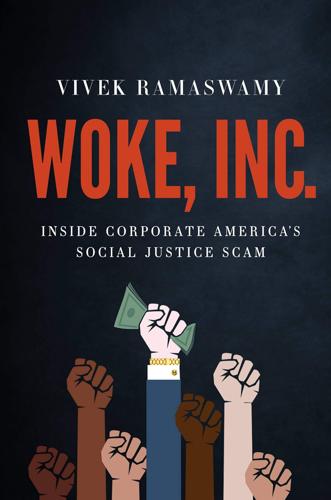
Woke, Inc: Inside Corporate America's Social Justice Scam
by
Vivek Ramaswamy
Published 16 Aug 2021
During widespread state-imposed lockdowns during the pandemic, YouTube (owned by Google’s parent company Alphabet) banned videos that were critical of COVID-19-related policies, including content posted by medical professionals arguing that lockdowns were excessive or unnecessary. Its stated justification? To remove “medically unsubstantiated” content in favor of facts from “authoritative” sources. According to YouTube CEO Susan Wojcicki, “anything that would go against World Health Organization recommendations would be a violation of our policy.”2 In early 2021, YouTube did the same thing by censoring the Senate testimony of a doctor who made the medical case for ivermectin, a little-known tropical medicine, to treat severe COVID-19 patients, with no explanation other than to say it violated its misinformation policy.

Digital Wars: Apple, Google, Microsoft and the Battle for the Internet
by
Charles Arthur
Published 3 Mar 2012
The scientific paper describing how Google chose its results wasn’t formally published until the end of December 1998; a paper describing how ‘PageRank’, the system used to determine what order the search results should be delivered in – with the ‘most relevant’ (as determined by the rest of the web) first – wasn’t deposited with Stanford University’s online publishing service until 1999.15 The duo incorporated Google as a company on 4 September 1998, while they were renting space in the garage of Susan Wojcicki. They did that using a cheque written in August for $100,000 from Andy Bechtolsheim, co-founder of Sun Microsystems, made out to ‘Google Inc’. (Page and Brin left it in a drawer in Stanford while they tried to get some more funding and figure out the mechanics of setting up the company that would be able to accept it.

New Laws of Robotics: Defending Human Expertise in the Age of AI
by
Frank Pasquale
Published 14 May 2020
Meanwhile, bots inflate platforms’ engagement numbers, the holy grail for digital marketers. In 2012, YouTube “set a company-wide objective to reach one billion hours of viewing a day, and rewrote its recommendation engine to maximize for that goal.”67 “The billion hours of daily watch time gave our tech people a North Star,” said its CEO, Susan Wojcicki. Unfortunately for YouTube users, that single-minded fixation on metrics also empowered bad actors to manipulate recommendations and drive traffic to dangerous misinformation, as discussed above. To help identify and deter such manipulation, both social networks and search engines should crack down on manipulative bots.

The New Digital Age: Transforming Nations, Businesses, and Our Lives
by
Eric Schmidt
and
Jared Cohen
Published 22 Apr 2013
We also benefited from conversations with many current and former Googlers: CJ Adams, Larry Alder, Nikesh Arora, Jieun Baek, Brendan Ballou, Andy Berndt, Eric Brewer, Shona Brown, Scott Carpenter, Christine Chen, DJ Collins, Yasmin Dolatabadi, Marc Ellenbogen, Eric Gross, Jill Hazelbaker, Shane Huntley, Minnie Ingersoll, Amy Lambert, Ann Lavin, Erez Levin, Damian Menscher, Misty Muscatel, David Pressoto, Scott Rubin, Nigel Snoad, Alfred Spector, Matthew Stepka, Astro Teller, Sebastian Thrun, Lorraine Twohill, Rachel Whetstone, Mike Wiacek, Susan Wojcicki and Emily Wodd. There are a number of people at Google who helped orchestrate many of the logistics and trips that helped make this book possible: Jennifer Barths, Kimberly Birdsall, Gavin Bishop, Kimberly Cooper, Daniela Crocco, Dominique Cunningham, Danielle “Mr. D” Feher, Ann Hiatt, Dan Keyserling, Marty Lev, Pam Shore, Manuel Temez and Brian Thompson.
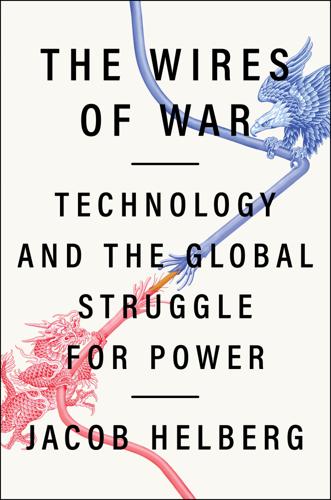
The Wires of War: Technology and the Global Struggle for Power
by
Jacob Helberg
Published 11 Oct 2021
At around 6:00, I walked into the storied Googleplex, the sprawling campus of low-slung glass-and-brick buildings that make up the company’s main headquarters. Google was the quintessential Silicon Valley start-up. Stanford PhD students Larry Page and Sergey Brin had incorporated the company in 1998, after working out of the garage of Susan Wojcicki (now YouTube’s CEO). By the time I joined, nearly two decades later, Google had grown into one of the most iconic companies on the planet. There were more than 60,000 Googlers working around the world, on everything from perfecting search engines to testing self-driving cars.1 Those products and services brought in an astonishing $90 billion in annual revenue.2 Within a year Google would briefly dethrone Apple as the most valuable brand in the world.3 Google had become the kind of company every scrappy start-up sought to unseat.

Surveillance Valley: The Rise of the Military-Digital Complex
by
Yasha Levine
Published 6 Feb 2018
It would make them rich beyond belief and transform Google from a mere search engine into a sprawling global platform designed to capture as much information as possible about the people who came into contact with it. The Brain Tap In 1998, Larry Page and Sergey Brin moved into the garage of a house owned by Susan Wojcicki, the sister of Brin’s future wife, Anne Wojcicki. They had an initial $100,000 check from Andy Bechtolsheim, the cofounder of Sun Microsystems, a powerful computer company that itself had come out of an ARPA-funded 1970s computer research program at Stanford University.36 The initial small investment was followed by a $25 million tranche from two powerful venture capital outfits, Sequoia Capital and Kleiner Perkins.37 Brin and Page couldn’t be happier.
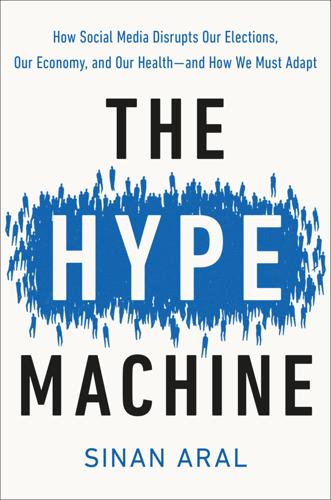
The Hype Machine: How Social Media Disrupts Our Elections, Our Economy, and Our Health--And How We Must Adapt
by
Sinan Aral
Published 14 Sep 2020
Deliberative processes make change deliberate, as it should be for limitations imposed on free speech. A National Commission on Technology and Democracy In researching this book, I watched hours of congressional testimony by tech executives like Mark Zuckerberg, Jack Dorsey, Sundar Pichai, and Susan Wojcicki. I watched testimony on privacy, antitrust, election manipulation, data protection, algorithmic bias, and the role of social media in vaccine hesitancy, free speech, political bias, filter bubbles, and fake news. I got one overwhelming feeling from watching congressmen and -women question tech executives: we need more experts leading the way.
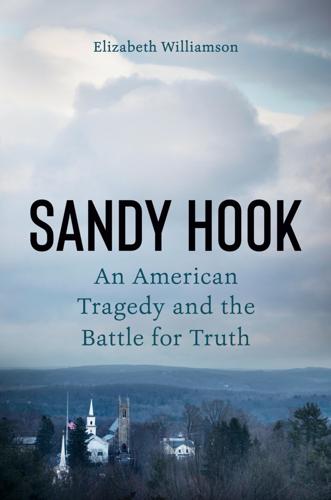
Sandy Hook: An American Tragedy and the Battle for Truth
by
Elizabeth Williamson
Published 8 Mar 2022
Facebook is by far the largest of the “monsters.” The year Noah died, the social network Zuckerberg founded in 2004 in his Harvard dorm room became the first platform to surpass one billion active users. By the end of 2021, that number was close to three billion. It enraged Lenny that Zuckerberg, Twitter’s Jack Dorsey, and YouTube’s Susan Wojcicki shaped what people read, bought, and got angry about. How their platforms fostered personal attacks by refusing to remove vicious content in the name of “free speech,” then threw up their hands when what any half-savvy user could predict would happen, did. “That kind of influence on human lives has to be government-regulated.

The Innovators: How a Group of Inventors, Hackers, Geniuses and Geeks Created the Digital Revolution
by
Walter Isaacson
Published 6 Oct 2014
When Page and Brin realized that it was time to put aside plans for dissertations and leave the Stanford nest, they found a garage—a two-car garage, which came with a hot tub and a couple of spare rooms inside the house—that they could rent for $1,700 a month at the Menlo Park house of a Stanford friend, Susan Wojcicki, who soon joined Google. In September 1998, one month after they met with Bechtolsheim, Page and Brin incorporated their company, opened a bank account, and cashed his check. On the wall of the garage they put up a whiteboard emblazoned “Google Worldwide Headquarters.” In addition to making all of the World Wide Web’s information accessible, Google represented a climactic leap in the relationship between humans and machines—the “man-computer symbiosis” that Licklider had envisioned four decades earlier.

The Code: Silicon Valley and the Remaking of America
by
Margaret O'Mara
Published 8 Jul 2019
and the other search portals were choking with garish ads. Here came Google’s cool expanse of white, a visual oasis to the user. Its search algorithm, honed over four years of academic testing, was a leap forward in the state of the art. With seed money in hand, Brin and Page moved operations out of the dorm and into their friend Susan Wojcicki’s nearby garage by the start of 1999. (Wojcicki was another child of academics; the professors’ kids were taking over the world.) They snagged Ram Shriram, a former Netscaper now at Amazon, as an advisor; Shriram persuaded his boss Jeff Bezos to make a personal investment too. Wilson Sonsini became Google’s counsel.